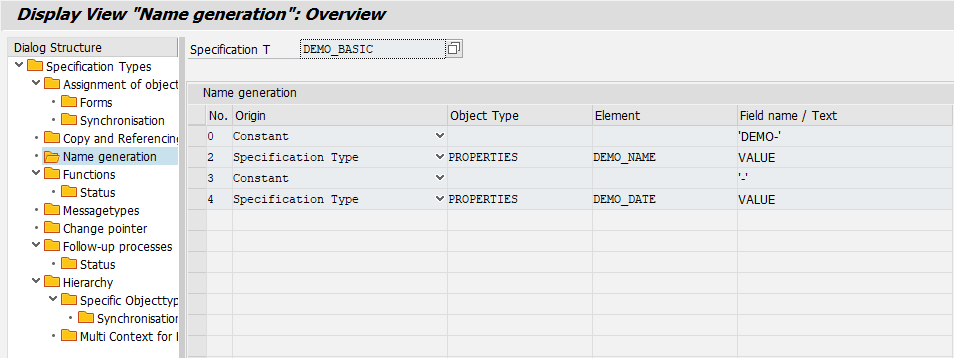Node names can be determined automatically via generation methods. As soon as a generation class is entered for the object type Header, the rule name will no longer be editable.
QPPD has a customizing table ( Specification types/item categories → Name generation ) that enables simple constructs to be mapped.
SAP does not support a normal space as a separator between elements at this point: this is ignored and the different subparts of the name are concatenated without a space.
However, you can use a protected space (Alt-0160 ' ' ), alternatively, an underscore ( Alt-095 '_' ) to work around this problem.
The class /SCT/QP_CL_GEN_HDR can be used for this purpose. To be able to map more complex name structures, a custom generation class can be used (see Generation of Names and Descriptions (P))
To be able to generate a language-dependent rule description, a customer-specific generation class is necessary.


